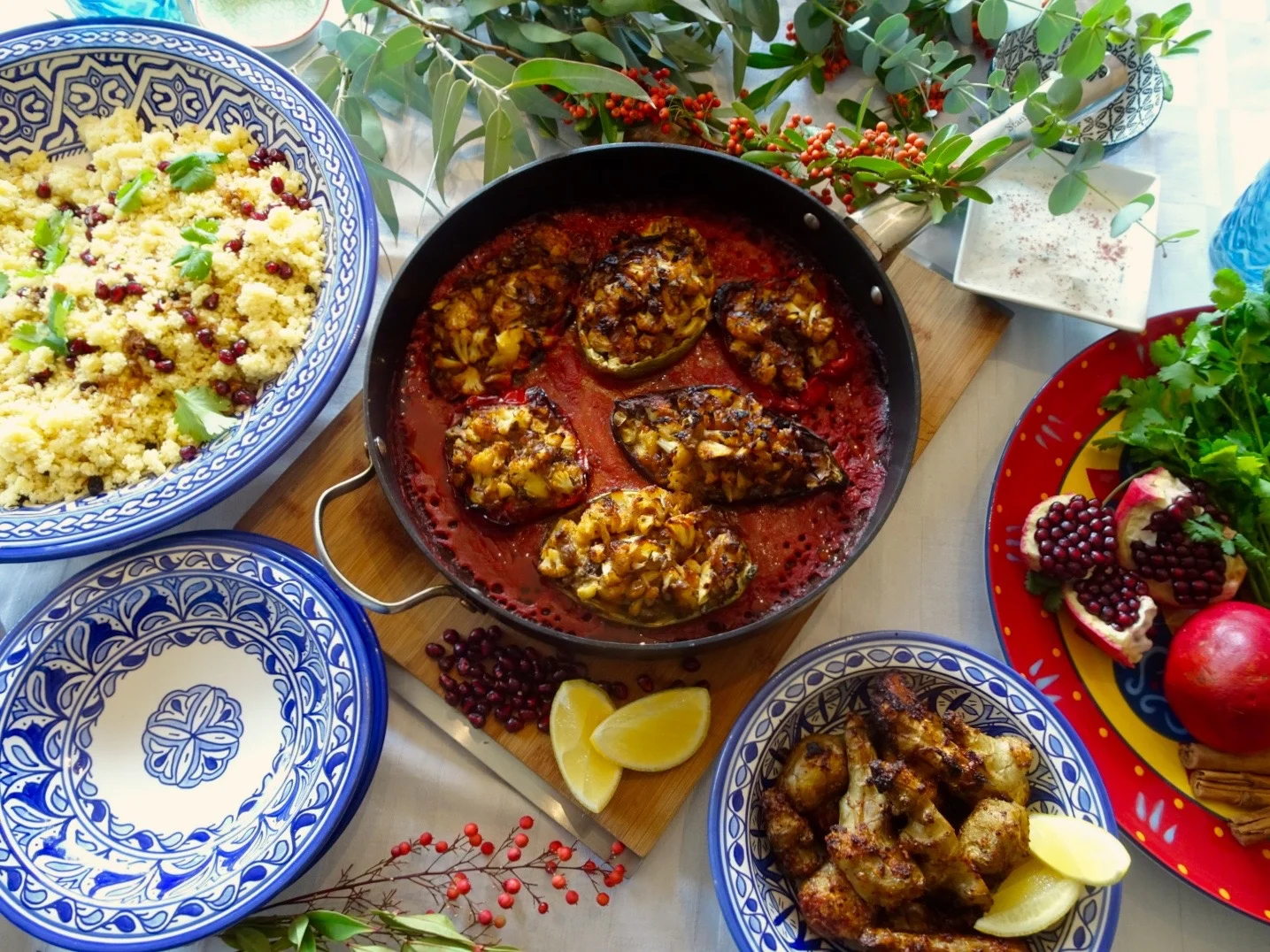Laos Talking, More Eating
Every day at sundown the main street in Luang Prabang is transformed into a night market. Imagine long rows of makeshift tables heaving with indigo-dyed scarves, tacky souvenirs and bright harem pants. Part way along the road, through a gap in the stalls, there's a tiny laneway. It's dark and narrow but I'd been told that this was the best place for street food. Other tourists held their breath and hurriedly turned back to the main street when they reached the barrels of dried fish and shrimp while the locals laughed at their screwed up faces. But I was eager to prove that I wouldn't be so easily intimidated as the other farang, foreigners, so I squeezed past the BeerLao crates piled too high and continued down the lane to watch the tiny world unfold. An old woman hacked purple dragon fruit into rough quarters, ready to be blitzed smooth into bright juices. With deft fingers, a young woman picked Betel leaves from a spiraled stack and rolled them up with a pungent paste into tiny packages. Smoked, dried, salted meats hung from hooks, backlit by dodgy lamps with trailing wires. The narrow, cramped space was a marvelous assault on the senses.
I finally stopped at a long table stacked with all kinds of ingredients: barbecued meats, bundles of fresh herbs, tofu, noodles, eggs and mushrooms. A gruff old man handed me a bowl which I filled with the flavours of my choice. The cost was determined by weight: I handed over several thousand 'kip' (basically nothing) after the bowl was balanced on an old pair of scales. My ingredient choices were roughly chopped or simply pulled apart and added into a big pot of steaming soup. After several weeks travelling in South East Asia I was confident that my tastebuds were adapting to the local levels of heat so when the old man challenged me: 'yes spicy or no spicy?' I was prepared.
Yes spicy, kop chay- thank you.
As you can see I had a vegetable heavy selection. Check out the mushrooms!
The precariously full bowl came out trailing rivers of steam and I had to content myself by sipping on a Beerlao for several minutes while I waited for the temperature to drop to something less than deadly. Laotian food is spicy and hot with full on flavours. I detected a whiff of the dried out fish, along with the fresh herbs and salty broth.
The soup was delicious, sep lay, of course it was. And goddamn it was tear-inducingly spicy too. Perhaps I had been a little hasty in my assessment of how well my tastebuds had acclimated.
The next day I woke before dawn and stood across the road while saffron-robed figures shuffled through the damp morning air. Devout locals had gathered along the footpath with bamboo baskets full of sticky rice which they pressed into the palms of the monks. Some of the barefoot monks were still children. In Laos, and many buddhist countries, it is common to send young children to be taught at the monasteries. Becoming a monk is not necessarily a lifelong occupation.
Monks at dawn collecting alms. Also a dog (there's always a dog)
As the long orange line snaked away through the backstreets of the town I wandered back to our hotel to catch a few more hours of sleep.
On the way back I passed a tiny hawker cart piled high with baguettes; bakeries seem to be among the last remnants of French colonialism. The split rolls were spread with chilli paste and stuffed with sliced pork, fresh green papaya, beans sprouts, tofu and coriander. A Laotian Banh Mi, essentially, and the perfect breakfast to have on the street as the long lines of robed monks weaved their way through the town.
My very great thanks to Tessa for taking this photo and to Kat for holding a lamp at exactly the right angle for such a long time
The best way I know how to cope with travel-sickness (the nostalgic kind, not the stomach-curdling kind) is to get together with friends and recreate the dishes that made my travels so memorable. I may not have a dark alleyway to cook in, or a table hung with mystery meats, but I knew I could put together the makings of a banging noodle soup. This particular noodle soup was so banging that it deserves it's very own post, so stay tuned (and add yourself to the mailing list) to read more about it.







